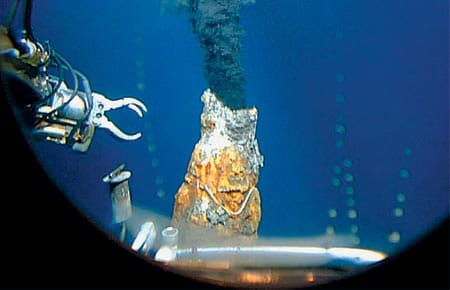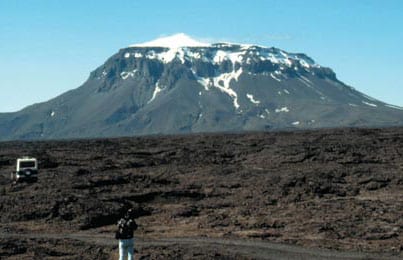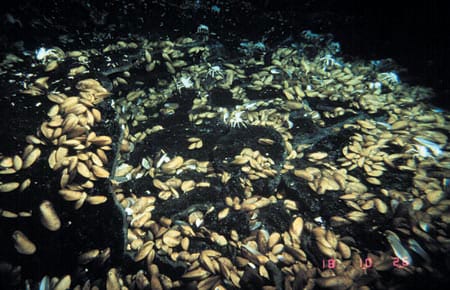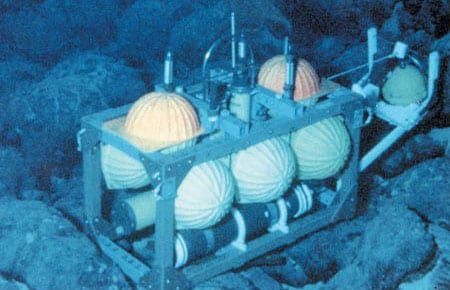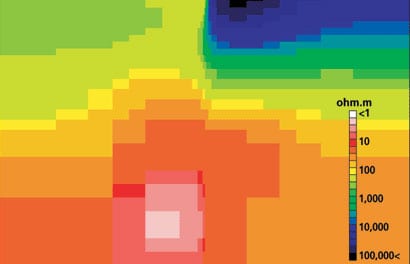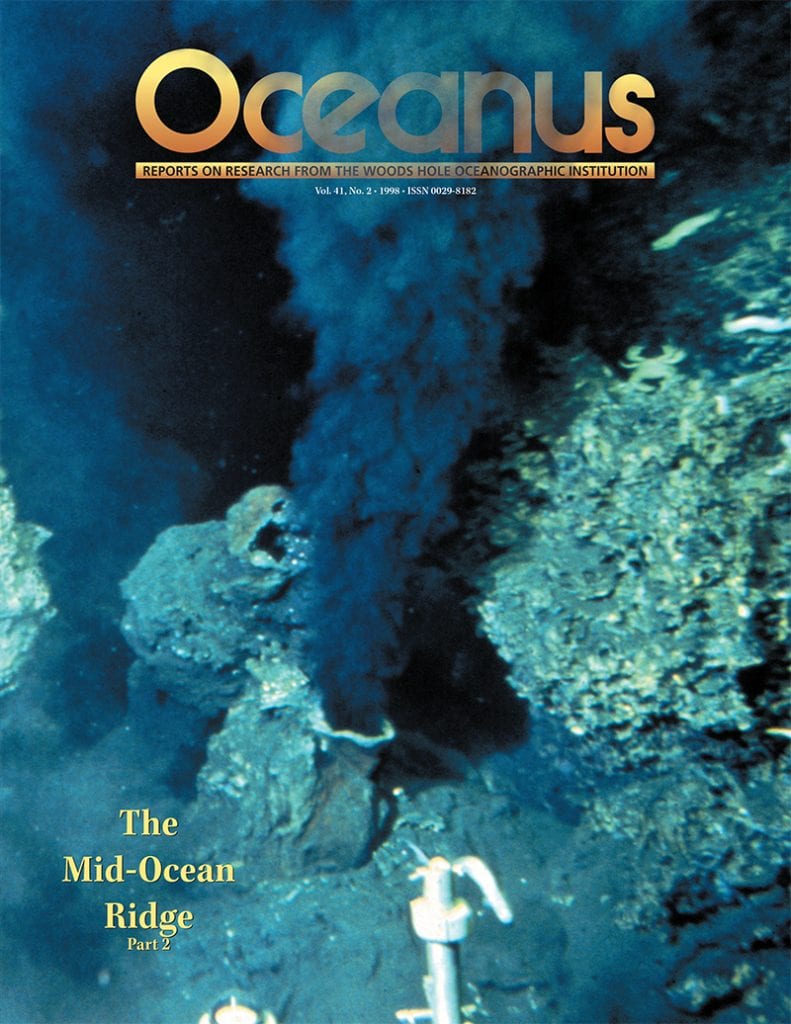
December 1998 ( Vol. 41 No. 2 )
and get Oceanus delivered to your door twice a year as well as supporting WHOI's mission to further ocean science.
Our Ocean. Our Planet. Our Future.

ALISS in Wonderland
In 1985, Cindy Van Dover, then a graduate student in biology in the MIT/WHOI Joint Program, discovered a novel light-sensing organ on a unique species of shrimp that lives at high-temperature, black smoker chimneys on the Mid-Atlantic Ridge. If this photoreceptor were indeed some sort of primitive “eye,” the question instantly arose: At depths of some 3,600 meters, where sunlight cannot penetrate, what are these shrimp looking at? The search for a source of light in deep-sea hydrothermal environments began.
How to Build a Black Smoker Chimney
Diving along the mid-ocean ridge at 21°N on the East Pacific Rise, scientists within the deep submersible Alvin peered through their tiny portholes two decades ago to see an astonishing sight: Clouds of billowing black "smoke" rising rapidly from the tops of tall rocky "chimneys."
Hitting the Hotspots
The great volcanic mid-ocean ridge system stretches continuously around the globe for 60,000 kilometers, nearly all of it hidden beneath the world's oceans.
Life on the Seafloor and Elsewhere in the Solar System
The RIDGE program (Ridge Inter-Disciplinary Globe Experiments) was sharply focused on the global spreading center system, but the program’s goals were broadly defined. RIDGE was designed to explore the causes, consequences, and linkages associated with the physical, chemical, and biological processes that transfer mass and energy from the interior to the surface of the planet along the mid-ocean ridges.
Deep-Sea Diaspora
When spectacular biological communities were first discovered at hydrothermal vents in 1977, biologists puzzled over two main questions: How did these oases of large and abundant animals persist in the deep sea, where food is typically scarce? And how did these unusual species, which occur only at vents, manage to colonize new vents and avoid extinction when old vents shut down?
The Cauldron Beneath the Seafloor
Just over 20 years ago, scientists exploring the mid-ocean ridge system first made the spectacular discovery of black smokers—hydrothermal chimneys made of metal sulfide minerals that vigorously discharge hot, dark, particulate-laden fluids into the ocean.
"Nothing Could Diminish the Excitement Of Seeing the Animals for the First Time"
The scientists who made the surprising discovery of teeming life around hydrothermal vents of the Galápagos Rift in 1977 were geologists and geochemists. They had not expected to find spectacular colonies of previously unknown, large animals on the deep seafloor.
The Big MELT
More than 95 percent of the earth's volcanic magma is generated beneath the seafloor at mid-ocean ridges.
A Current Affair
oal of probing the earth's inaccessible deep interior. But the technique remains something of a mystery even to many marine scientists. It has been used widely on land, particularly for regional-scale surveys, but only a few full-scale MT surveys have been carried out on the seafloor.


